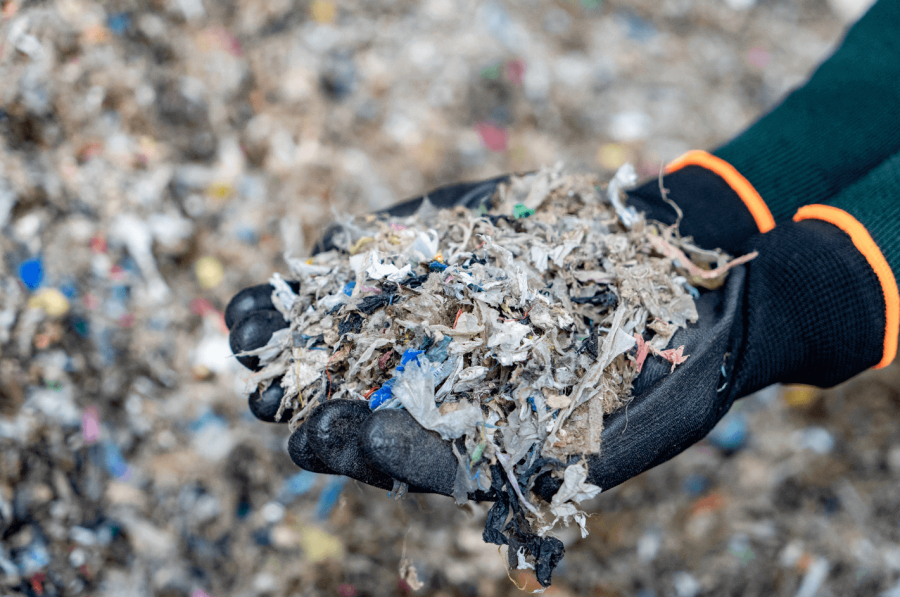The Global Waste Crisis
The world produces a staggering amount of waste each year. According to data from the World Bank, the world generates over 2 billion tons of municipal solid waste each year, and this number is projected to increase to 3.40 billion tons by 2050.
What happens to waste worldwide?
- 37% is disposed in landfills.
- 33% is openly dumped.
- 13.5% is recycled.
- 11% is incinerated.
- 5.5% is composted.
The most traditional methods of disposal are becoming increasingly problematic, while recycling has its own limitations.
Landfills and Open Dumps
Globally, most waste (37%) is currently disposed of in some form of a landfill—sanitary landfills with landfill gas collection systems account for only 8%. Another 31% of waste is thrown in open dumps.
Landfills have been the primary method for solid waste disposal for many years, but their usage has become problematic due to capacity limitations and significant environmental effects. The increasing amount of waste generated by human activities is causing landfills to reach capacity quicker than ever before, and the space available for landfill sites is limited.
Additionally, the decomposition of organic matter in landfills is a significant contributor to global emissions of methane – a greenhouse gas 86 times more effective at trapping heat in the atmosphere compared to carbon dioxide when measured over a 20-year time frame.
Landfills are a main contributor to anthropogenic climate change, accounting for approximately 5% of global greenhouse gas (GHG) emissions.
This waste management method is not only harming the environment but also posing a risk to human health and biodiversity. This further highlights the need for alternative waste management practices that are more sustainable.
Incineration
Incinerating waste accounts for 11% of global waste management. Incineration represents the end of the line for material resources, sending goods and materials up in smoke. In addition, incinerating plastics and other waste generates toxic pollutants and GHG emissions.
Between 0.7 and 1.7 kg CO2 are produced for every kg of waste incinerated.
One often-cited benefit of incineration is that electricity can be generated from combustion. However, it should by no means be considered clean energy. The total carbon emissions from energy produced by waste incineration, considering both the fossil and biogenic carbon content of the waste, reach approximately 2.5 kg CO2/kWh. This is roughly 2.5 times higher than energy generated by coal plants.
What About Recycling?
Out of the 2 billion tons of waste produced globally each year, only roughly 13.5% is recycled. This means that a vast majority of the waste we produce is not being properly managed and is having a negative impact on the environment and on civilization.
Recycling is a great solution to reducing waste, but it cannot solve the entire problem. Current recycling systems have limitations and are not capable of managing all the waste generated. Not all materials can be recycled, and many products are made from a combination of materials that are difficult to separate. For other materials that are technologically easier to recycle, it’s difficult to find a market for recycled materials. Additionally, a lack of infrastructure and political support in some areas makes it difficult for residents to recycle their waste.
It’s worth noting that recycling rates vary significantly by country and region. Developed countries tend to have higher recycling rates, while developing countries tend to rely more heavily on landfills yet produce less waste overall. In the US, 25% of waste is recycled, while in European Union countries, recycling rates range from 35% to over 50%. In contrast, in developing countries, recycling rates are often less than 5%. As a result, a significant amount of waste still ends up in landfills, incinerators or open dumps.
In summary, the current recycling systems are facing challenges that limit their effectiveness in managing waste, making it necessary to explore alternative solutions.
What About Composting?
Although composting is a fantastic waste management solution, it is not feasible to effectively manage all organic waste this way. In many places, lack of infrastructure and limited access to composting facilities mean that a significant portion of organic waste still ends up in landfills or the environment, causing harm to the ecosystem and releasing greenhouse gases. Furthermore, there is a high potential for contamination from items such as produce stickers, metal utensils or non-compostable plastics due to user error. Further compounding this problem are misleading or confusing labels indicating that plastics are compostable when they can only be processed in industrial facilities under very specific conditions. Additionally, some organic waste, such as food residue in conventional plastic containers, cannot be effectively composted in any facility.
Composting alone cannot tackle the increasing amount of organic waste generated worldwide, especially with the rise in population and consumption. This will require a multi-faceted approach that includes solutions like source reduction, improved food donation systems, and upcycling of food scraps, along with composting. Therefore, it is crucial to invest in and develop a holistic and sustainable waste management system to ensure that organic waste is managed in an environmentally conscious manner.
UBQ Closes the Gap
As the current recycling and composting systems are facing challenges that limit their effectiveness in managing waste, it is necessary to explore alternative solutions.
Converting waste that was destined for landfills, open dumps or incinerators into UBQ™ material, a novel thermoplastic, offers a complementary solution to traditional recycling methods. UBQ Materials converts different types of mixed waste, including all organics and unrecyclable materials, and turns it into a climate-positive raw material. This biobased thermoplastic can be used as a substitute to oil-based plastics and other resource-depleting raw materials in a variety of applications. UBQ™ is used in multiple industries – from construction materials and consumer goods to furniture, car parts and even everyday household items.
With UBQ™, manufacturers can make an easy material swap that advances their sustainability goals.
Every ton of UBQ™ replaces 1 ton of oil-based plastic, diverts 1.3 tons of waste from landfill and incineration, and prevents up to 11.7 tons of CO2eq.
UBQ and Circularity
With the growing population and consumption rate, this innovative material is playing a significant role in reducing the waste that is being mismanaged, while also meeting the increasing demand for sustainable materials. By converting waste that is nearly impossible to recycle into a new resource, UBQ™ is helping to close the loop between waste management and a truly circular economy. In tackling the waste crisis and advancing a circular economy, UBQ also prevents greenhouse gas emissions, decreases reliance on fossil fuels and preserves finite natural resources for future generations.


